Filling In History: Conserving Fifteenth-Century Tibetan Initiation Cards, Continued
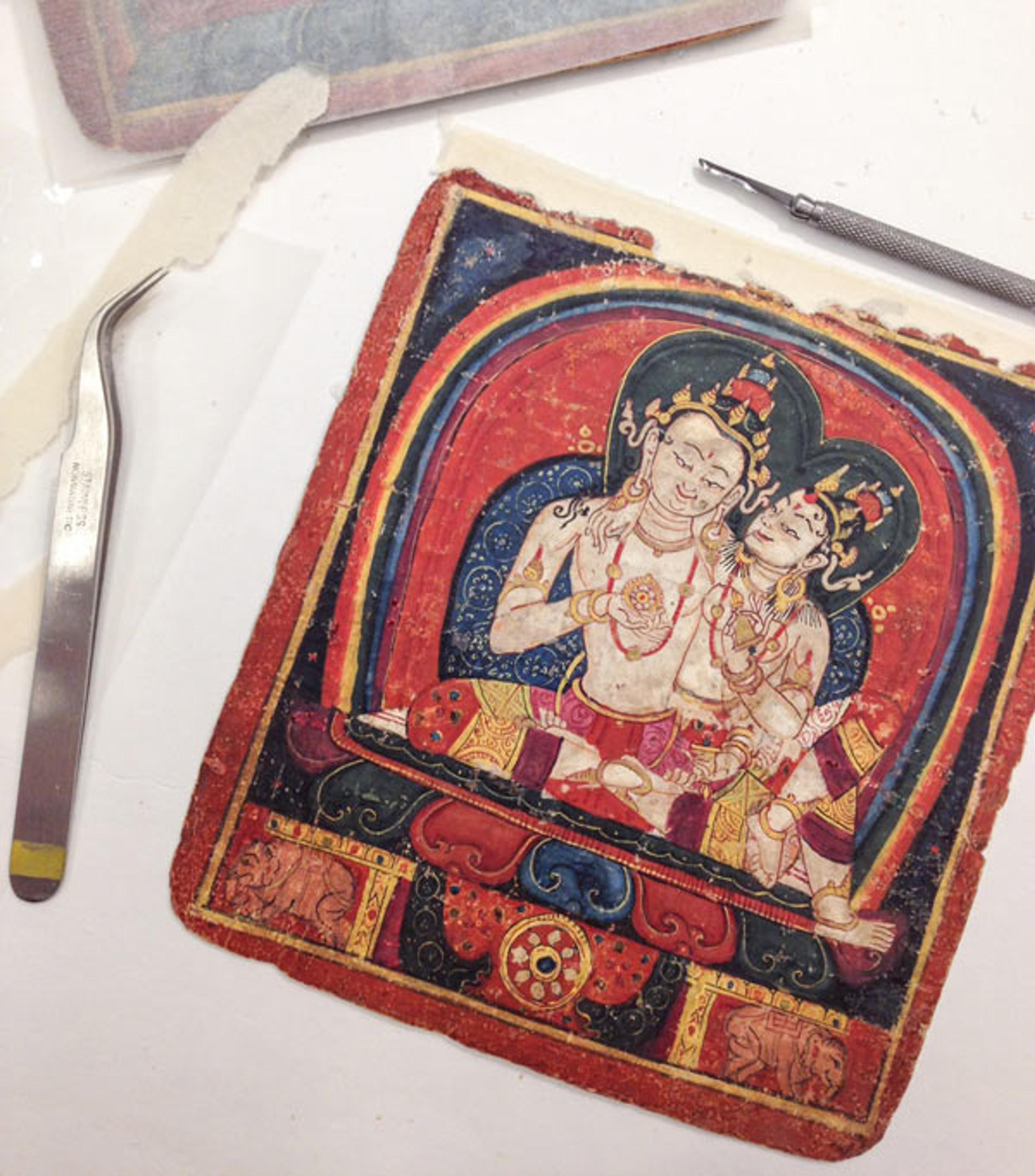
One of the Museum's Tibetan initiation cards during conservation treatment. Initiation Card (Tsakali): Vairochana, early 15th century. Tibet. Opaque watercolor on paper. The Metropolitan Museum of Art, New York, Rogers Fund, 2000 (2000.282.2)
«In the course of conserving a group of twenty-five Tibetan initiation cards currently on view in Sacred Traditions of the Himalayas, the second phase of treatment—performed after media consolidation—concerned compensating losses. All of the cards were damaged along their top edges from a combination of mold deterioration of the multilayered support and the handling received during their past lives as functional objects. While some of the cards were only missing parts of the top red margins, others had losses that extended well into the image area.»
These losses were problematic for two reasons: the top edges were vulnerable to further damage, and focus was drawn away from the illustrations. An intact border around an image frames and completes it, while a disrupted border draws the eye to it and subsequently unbalances the image. In the interest of their preservation, and in order to convey a unity between these objects and a completeness within each individual card, we decided to fill and inpaint the losses. A "fill" is an insert made with sympathetic paper which mimics the original lost-paper support.
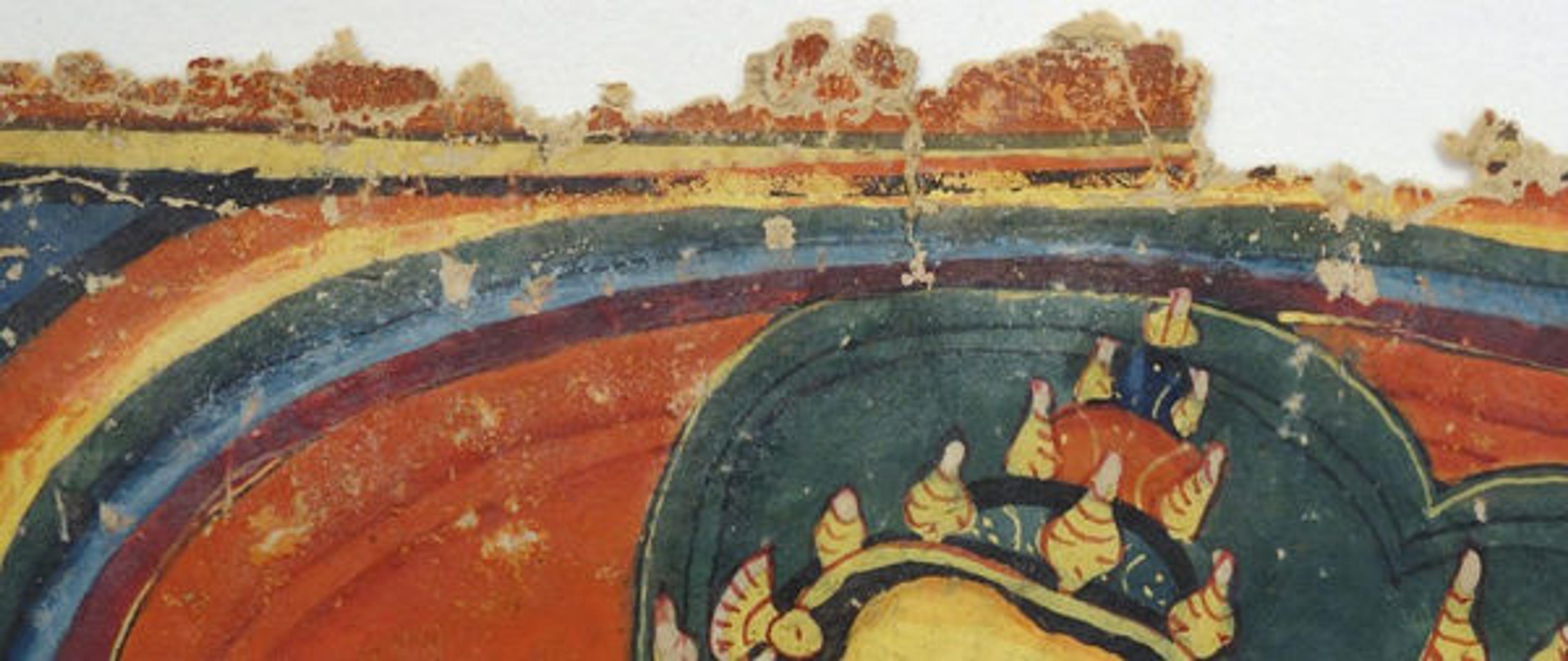
Top edge of 2000.282.2, prior to conservation
There were also a few cards that had old fills made with stronger and stiffer paper, which caused tension along the edge and led to warping. These fills, with their heavy-handed inpainting, would have to be removed and replaced.
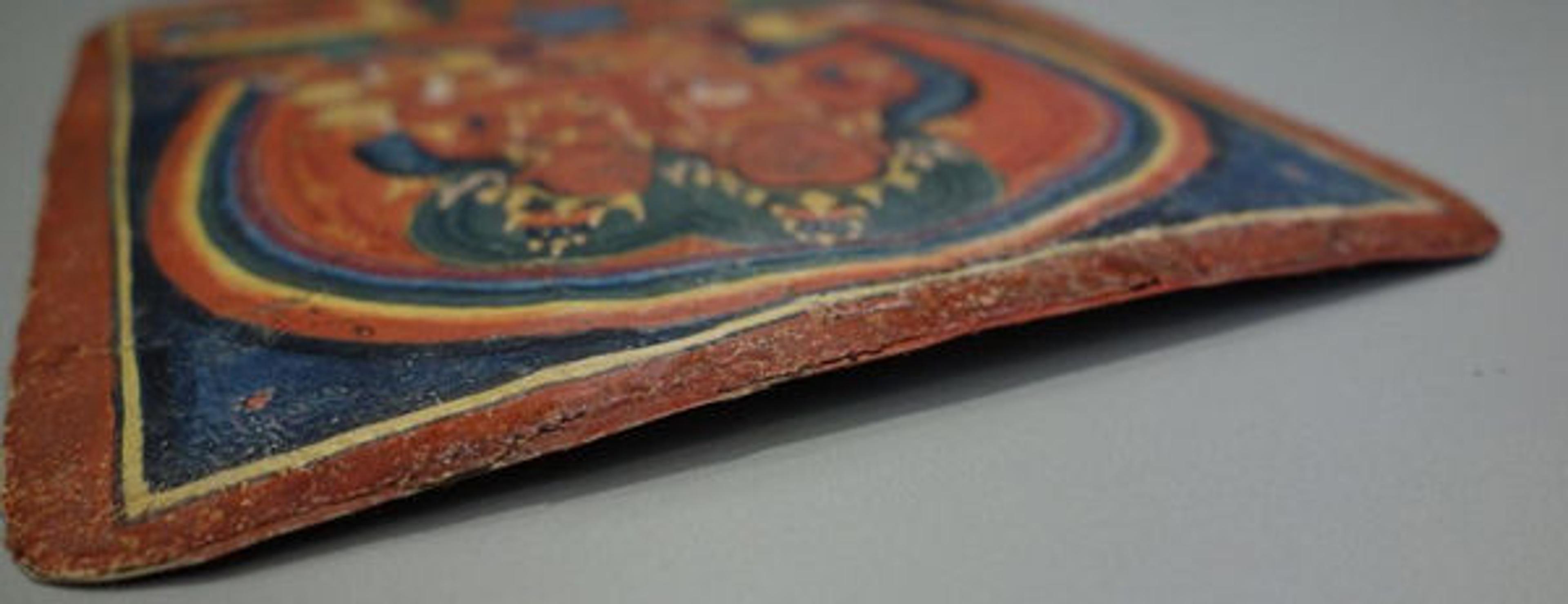
Initiation card showing old fills and substantial warping
The first step before inserting a new fill is to re-adhere all the damaged paper layers on the front and back with a tiny amount of starch adhesive.
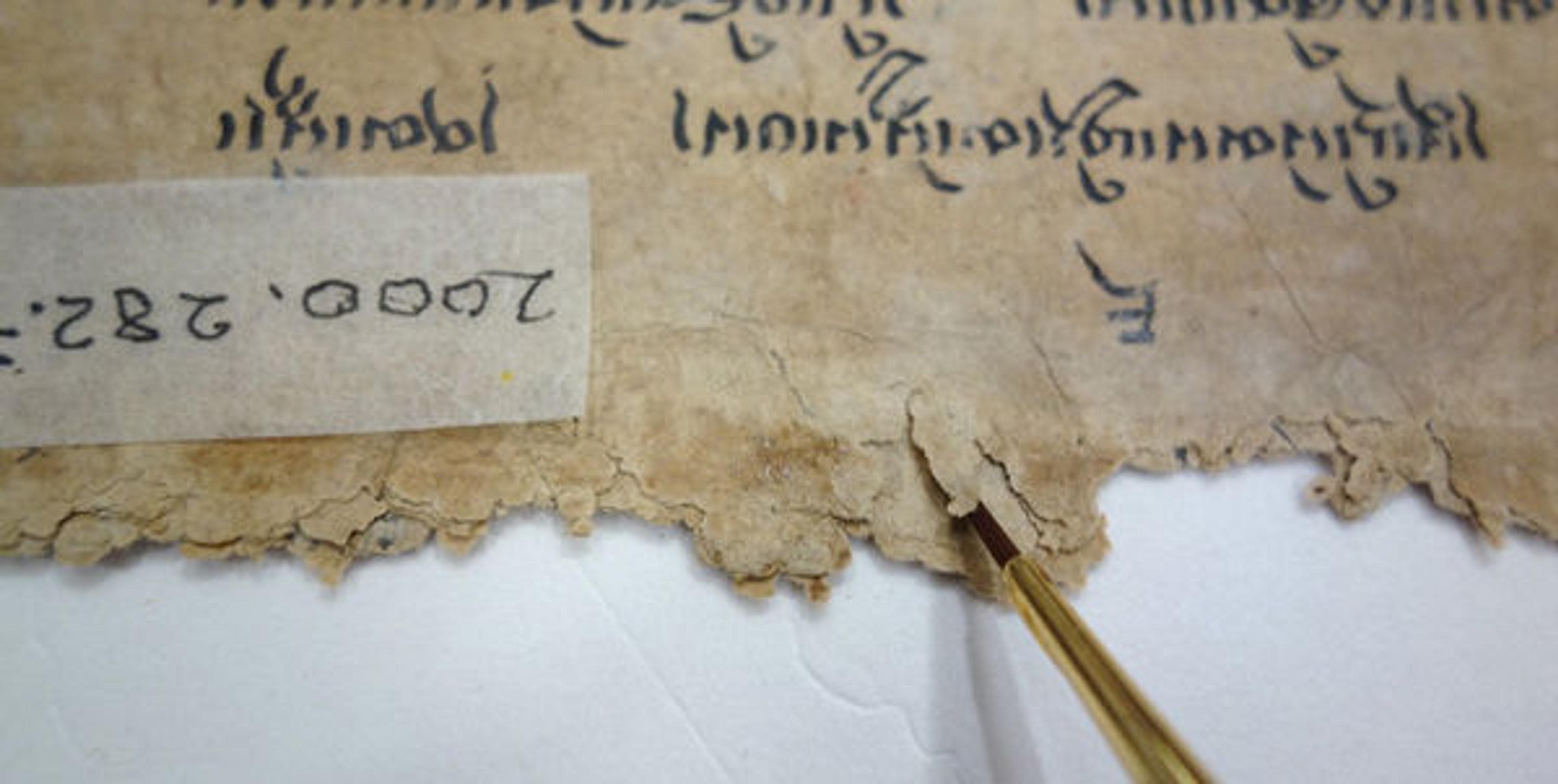
Adhesive is applied between delaminating paper layers
The papers used for the new fills are soft and flexible, attached with a low-strength adhesive which allows the fill to move with the objects as it reacts to minor environmental changes. Fills are created by using a needle tool to incise the fill paper. The perfectly shaped fill pops neatly out of the soft paper, and each fill is built up from several layers to match the thickness and the structure of the cards.
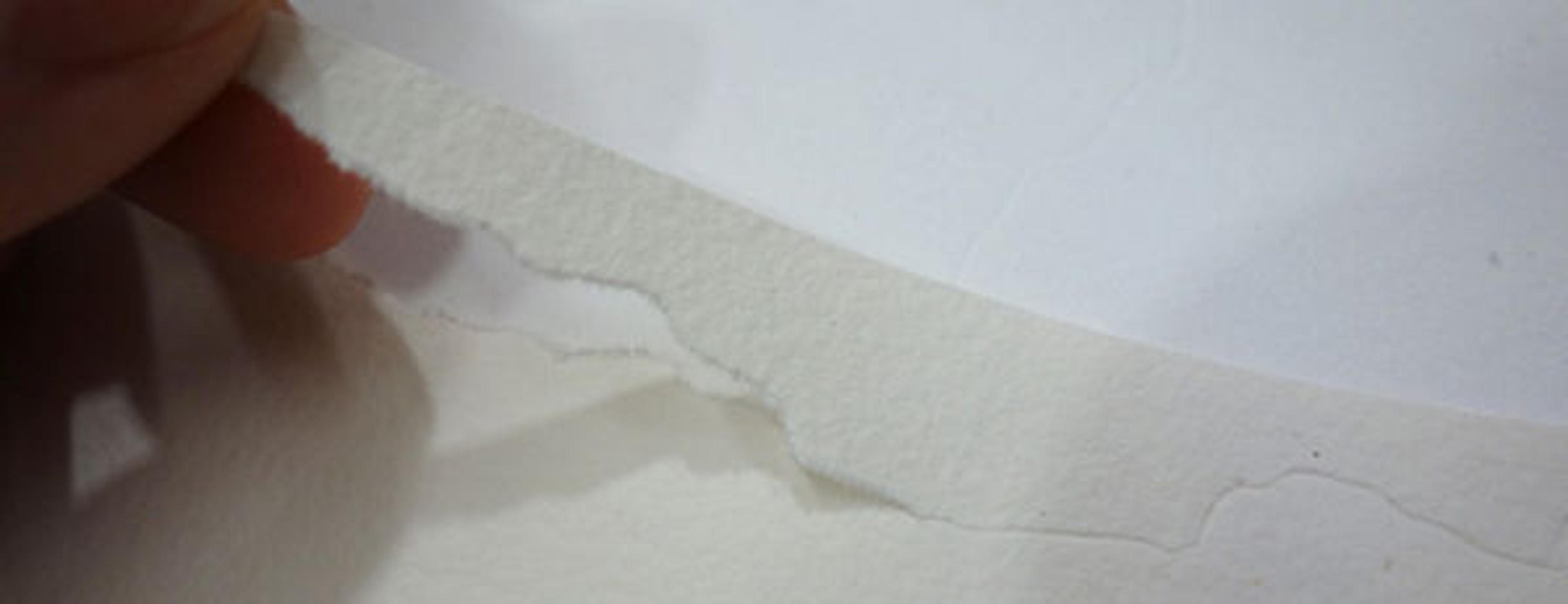
The shaped fill is removed from the sympathetic paper
This hyperlapse video shows the process of making a fill for one of the cards. Here you can see the needle tool tracing the loss on Mylar, needling and then separating the loss shape on fill paper, chamfering the fill's edges with a scalpel for a smoother join, pasting it out with wheat-starch paste, and attaching it on top of another layer. The fill would then have to be dried by pressing between blotters and a bit of weight.
After the fills are in place they are then inpainted with watercolor. Layers of color are slowly built up to match the margins of the cards, which are variegated due to losses, former campaigns of inpainting, abrasions, and natural variations in tone.
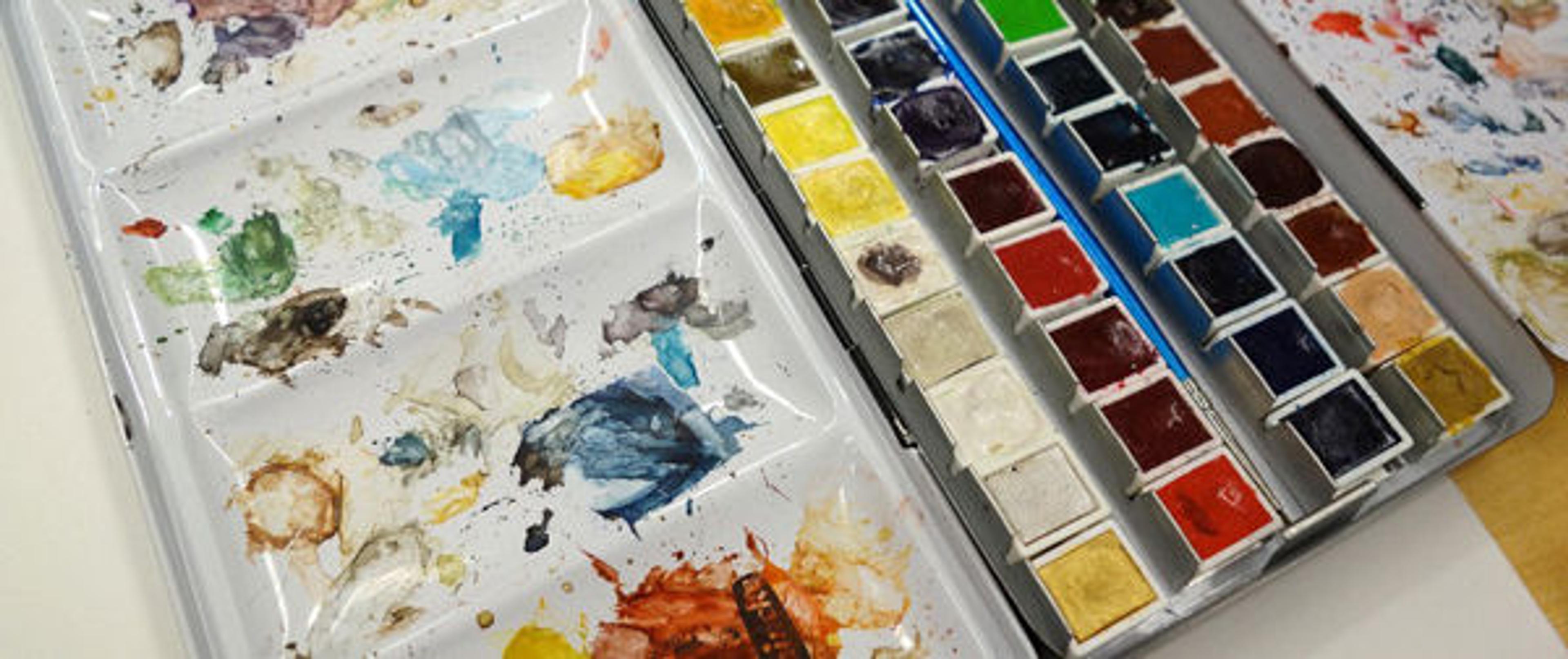
Fills are inpainted with layers of watercolors
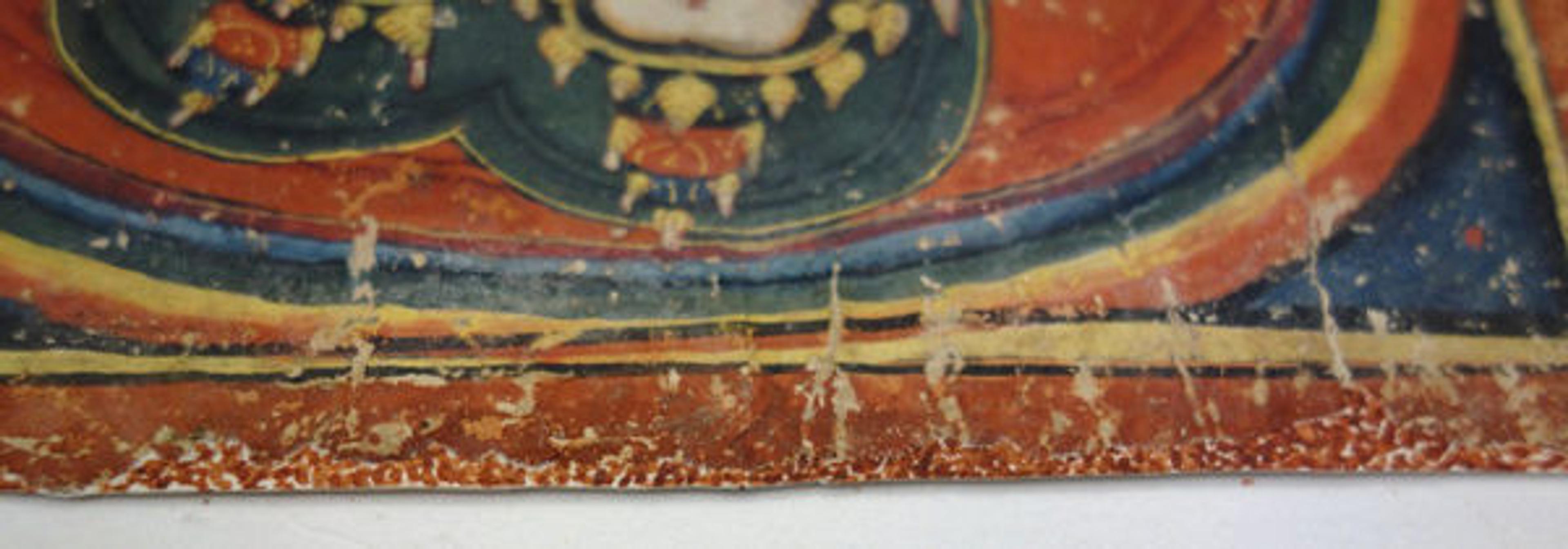
Careful attention is paid to ensure the new fills match the natural variations in color tone of the original paint
The final result looks appropriate to the card's age and use, and allows the margin to function again as a kind of frame for the image, at the same time protecting the object from further damage.

Initiation card after conservation treatment. Initiation Card (Tsakali): Akshobya, early 15th century. Tibet. Opaque watercolor on paper. The Metropolitan Museum of Art, New York, Rogers Fund, 2000 (2000.282.1)
View all blog articles related to Sacred Traditions of the Himalayas.
Follow the conversation: #SacredTraditions
Rebecca Capua
Rebecca Capua is a conservator in the Department of Paper Conservation.